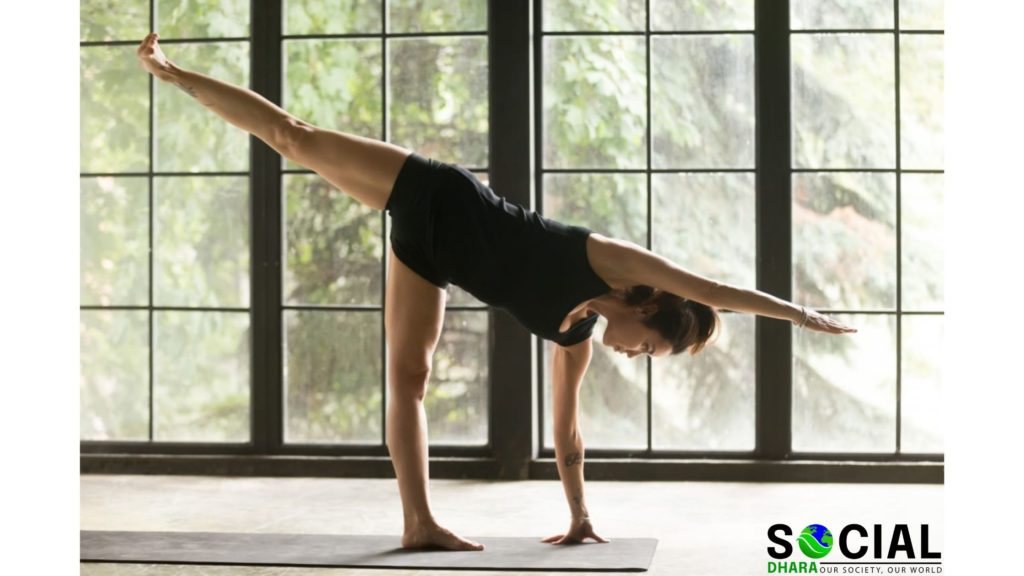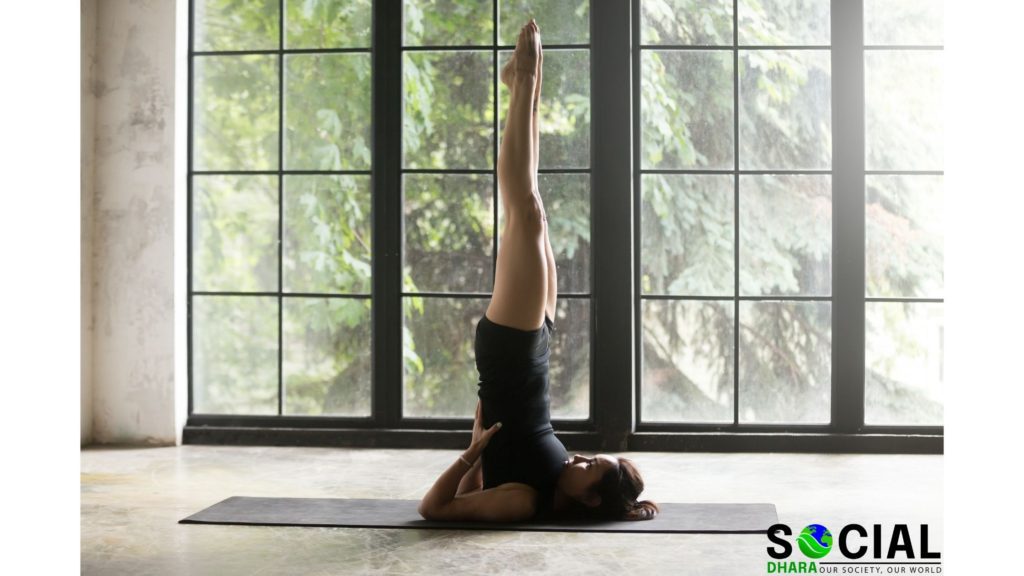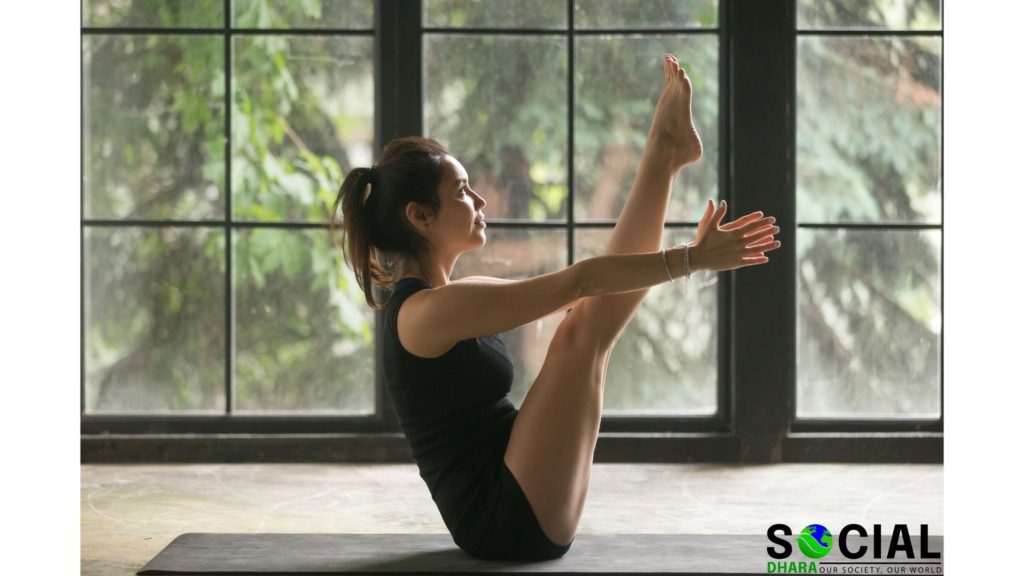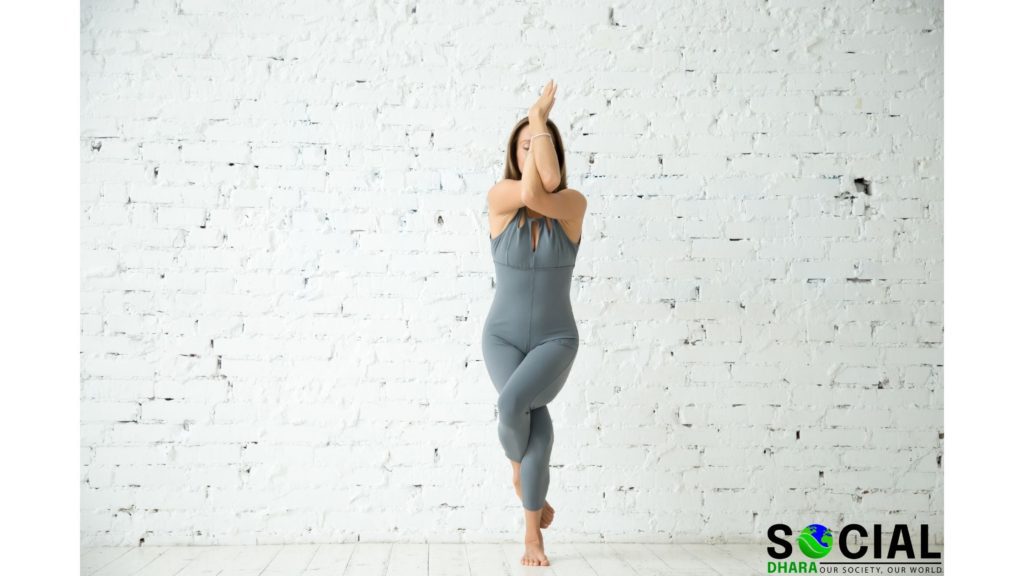Intermediary yoga postures exacerbate basic process by mandating more of someone’s body. It gives extra strength, good balance, intensified scrutiny. When you can stabilize entirely on your arms, reclining solidly on almost your sits bones being sure of your sole vitality. When you retained all amateur yoga postures, it is time to shift to the second phase – Intermediate yoga postures.
Understanding the need for a shift from one grade to another is a sanity chore for yoga practitioners as the shift should occur smoothly. Ideally, one should start up striving the progressive deviations of the amateur asanas and then slowly move to freshen intermediate yoga asana.
Also read: Five Must Follow Yogaasans for Beginners
One can uncover a gear of yoga positions altered from the newcomer yoga moves smooth shift. Choose the posture according to your health condition and ordinances to formulate your yoga cycle.
1. Ardha Chandrasana (Half Moon Pose)

Half-moon is a posture dignity tip-tilted, on one leg and one hand, one arm attaining for the blisses and one leg fully broadened, the counterpart of you supporting the other half. The half-moon yoga pose is also known as Ardha Chandrasana is a stature, equalizing pose that is especially demanding.
How to accomplish?
- Stand straight on the mat. Bring your right foot back.
- Connect your core, give rise to your right hand to the rig hip and lift and straighten the right leg.
- Remember to check left leg is strong by confronting your glutes and quads, lifting your kneecap.
- Swivel right hip back. So rather than your hips being parallel to the earth, need to be resembling the right side of the hall.
- Following, broaden your right-hand upside, palm confronting the right side of the hall. Heave the shoulders out of your ears by gluing your shoulders blades onto your back.
- Take deep breaths and then slow down.
- Slowly come out of it the same way you came in. Repeat the steps for the other side.
Advantage
The posture stimulates to enhances thighs, ankles, spine, and it circulates chest, back, shoulders, calves, hamstrings and groins. An adequate balance enables to boost energy level and lessening anxiety status.
2. Salamba Sarvangasana (Shoulder Stand Pose)

A shoulder stand is a progressive posture that is extremely helpful for one’s physique and mind. It may take time and forbearance is a key to master it. It is a portion of the Ashtanga yoga shutting progression. Shoulder Stand is also known as candle pose, stimulates peace and health throughout the entire body.
How to accomplish?
- Lay down on a mat with legs leaning and feet on the ground, gently raise.
- Hoist your hips off of the mat appearing into a bridge pose and broaden your arms on the ground. Lean at the elbows, position hands on your low buttock s building a shelf.
- Lift the legs, don’t turn your head to the side, Keep your starting upward and neck straight.
- Hold up through the feet. Feel the chest towards the chin to assist in starting the upper back.
- Hips facing the hall and feet toward the end of the hall and straighten the body.
- Keep up the pose for up to 10 to 15 breaths.
- Roll out slowly.
Advantages
Shoulder stand is a moderate pose helps in circulating blood and give relief from stress also it makes your shoulder stronger, in addition, help in headache.
3. Navasana (Boat Pose)

The boat pose is so easy but also difficult. One need to stabilize the tailbone and crouching bones, torso and head aligned in one half of the body.
How to accomplish?
- Start-up with a seated position with your knees bent and the feet flat on the ground.
- Lift feet off the ground. Draw your shins equal to the ground. This is half boat pose.
- Torso will generally fall back, but don’t let the spine hoop.
- Put your legs to a 45-degree angle if you are comfortable without forfeiting the quality of the upper body.
- Roll out the shoulders behind and untangle your arms around parallel to the ground with your palms came out.
Advantage
Boat Pose creates abdominal and core tighter. In extension to the abdominal muscles, it functions as the intense hip flexors. These part of muscles get weak when someone stoops excessively. It will also enable one to formulate the balance.
4. Garudasana (Eagle Pose)

Eagle pose is an asana of actual fixation. As like the bird eagle, the eagle pose put up with the long view homing in on the facts that nourish your strength. Prevailing powerfully on one leg, the other leg draped around the calf, both arms intertwined in front of the chest with hands accentuating, being stable, breathing calmly, and stabilized.
How to accomplish?
- Switch your weight to your left foot.
- Heave your right leg off the floor.
- Traverse your right thigh over your left thigh as lofty as practical.
- Hitch your right foot around the left calf.
- Pull both arms in front of you and correspond to the ground.
- Stoop your arms and traverse the left arm over the right, hooking up the elbows.
- Heave the elbows to the length of your shoulders while maintaining the shoulders sliding down out from the ears.
- Maintain your spine at a 90° angle to the ground and the crown of the head growing larger.
- Hold these pose for 5 to 10 breaths.
- Reiterate on the different side.
Advantage
The Eagle yoga pose is deemed to be incredible and helpful for runners. The junctions filled with raw blood behaves like huge assistance for running and the lengthening of the legs brings more stability and stamina in the legs. The pose also helps to boosts the balance of the body and enhances concentration. This yoga posture spreads the hips, thighs, shoulders and upper back.


